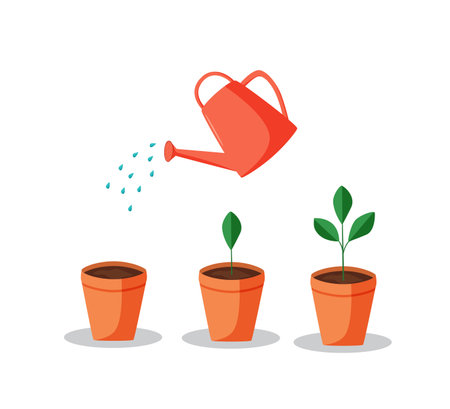Embracing the Allotment Community Spirit
As spring tiptoes into the United Kingdom, allotment sites across the country begin to hum with anticipation and renewed energy. British allotment gardening is more than simply sowing seeds and tending plants; it’s a cherished tradition woven into the very fabric of our communities. Stepping onto your plot, you’re greeted by the friendly faces of fellow gardeners—each one ready to share a weather report, a clever planting tip, or even a handful of surplus seeds. In these shared green spaces, generations exchange wisdom: from the best way to keep pigeons at bay to which spuds fare best in local soil. The arrival of spring is an event we celebrate together, united by muddy boots and hopeful hearts. There’s a special kind of joy in watching daffodils nodding along tidy paths and hearing children’s laughter as they discover wriggling worms or the promise of sweet peas. Within every allotment, families and neighbours nurture not just their crops but also friendships that blossom alongside runner beans and raspberries. This season, let’s embrace the spirit of community that defines British allotments—offering encouragement, advice, and a cuppa or two as we all embark on another year of growing together.
2. Essential Spring Prep: Waking Up Your Plot
Spring is the magical moment when your allotment stirs after a long, restful winter nap. Before you sow even a single seed, it’s time to gently wake up your plot and set the stage for a thriving season. Let’s walk through the essential steps that every UK allotmenteer should follow to ensure their patch is brimming with life, learning, and laughter—much like nurturing our little ones to greet each new day.
Reviving Your Soil: The Heart of Every Allotment
Healthy soil is the beating heart of your spring garden. Begin by turning over the top few inches with a garden fork, letting the earth breathe and break up any clumps. If your soil feels heavy or sticky (a common British challenge), sprinkle in some well-rotted compost or leaf mould to improve texture and drainage. Test the pH if you can—many local councils offer kits—and adjust as needed for your chosen crops.
Tidying Raised Beds: A Family-Friendly Task
Gather everyone for a spot of tidying! Clear away last year’s plant debris, old mulch, and anything that looks tired or diseased. Raised beds benefit from a fresh layer of compost—about 2-3cm deep—worked gently into the surface. This not only feeds your plants but also creates a soft, welcoming home for seedlings. Use this time to check that bed edges are secure and mend any wobbly boards.
Checking for Early Weeds: Spot Them Before They Settle In
| Common Early Weeds | Action Needed |
|---|---|
| Chickweed | Hand-pull or hoe before flowering |
| Dandelions | Remove roots entirely to prevent regrowth |
| Nettles | Wear gloves; remove roots for composting if young |
Weeds love to sneak in early! Make it a game with children—who can spot the most chickweed? Removing weeds now saves hours later and keeps nutrients available for your veggies instead.
Composting With an Earth-Friendly Touch
Spring is perfect for refreshing your compost system. Add kitchen scraps, lawn clippings, and prunings in thin layers, mixing green (nitrogen-rich) and brown (carbon-rich) materials. Remember: avoid meat, dairy, or cooked food, which attract unwanted visitors. Turn your heap with a fork every fortnight to keep things aerated and sweet-smelling—a bit like stirring soup with the family on a rainy afternoon!
Top Tips for Eco-Friendly Composting:
- Add crushed eggshells to boost calcium.
- Layer cardboard between wetter waste to balance moisture.
- Cover compost with an old piece of carpet or tarpaulin to retain warmth.
This mindful preparation ensures your allotment wakes up happy and healthy, ready to reward your efforts with bountiful harvests all season long.

3. Must-Grow Veg and Herbs for UK Spring
Spring allotment gardening in the UK is a tradition wrapped up in family stories and new beginnings. Theres a special magic in choosing what to sow, especially when little hands are eager to help. Here’s a rundown of must-grow veg and classic British herbs that thrive in our temperamental spring – along with tips to make planting an adventure for kids as well as grown-ups.
Broad Beans: The Allotment Classic
Broad beans are beloved by allotment gardeners for their hardiness and reliable yields. Sow seeds directly into well-prepared soil from March onwards. Get children involved by letting them push those chunky seeds into the ground – perfect for small fingers! Watch together as sturdy shoots emerge, inspiring lessons in patience and growth.
Onions: The Flavour Foundation
Onions are a staple of British cooking, and growing your own from sets is simple. Plant onion sets in rows, just poking through the soil surface. Kids can help space them out, counting as they go, turning maths into muddy fun. Onions teach us about resilience—they’ll withstand nippy nights and come good by summer.
Early Potatoes: Digging for Treasure
No spring allotment is complete without early potatoes, such as Charlotte or Rocket. Chit seed potatoes on a windowsill, then plant out from March. Invite children to dig shallow trenches and place the tubers inside—planting potatoes is like burying treasure you’ll unearth together come June!
Carrots: Sweet Roots of Spring
Carrots prefer sandy soil and a sunny spot. Sprinkle seeds thinly so they don’t crowd each other out—a job perfect for nimble little hands. Cover lightly with soil and keep moist; soon you’ll have feathery tops waving in the breeze. Carrots remind us that sometimes the sweetest rewards are hidden away, waiting to be discovered.
Kale: Hardy and Healthy
Kale is a true hero of the British plot—tough, tasty, and packed with nutrients. Sow seeds in modules indoors or directly outside later in spring. Children can water seedlings and watch them grow strong, just like superheroes of the vegetable patch.
Classic British Herbs: Fragrance and Flavour
No allotment is complete without a handful of classic herbs—think parsley, chives, mint, and thyme. These can be sown outdoors from April or started earlier indoors. Encourage children to rub leaves gently between their fingers to release scents; it’s a sensory experience that sparks curiosity about nature’s flavours.
Top Tip for Families:
Create a “kids’ corner” on your plot where children choose their own seeds to sow and nurture. This not only builds confidence but also deepens their connection to nature—and creates memories that will last long after harvest time.
4. Weather Wisdom: Navigating the British Spring
Spring in the UK is a true adventure for allotment gardeners, with its unpredictable mix of sunshine, showers, and the occasional stubborn frost. Like nurturing a curious child who insists on splashing in every puddle, embracing our famously fickle weather is part of the joy—and challenge—of growing your own. But don’t let grey skies dampen your spirits or your seedlings! With some clever tricks and a bit of British cheer, you can protect your precious plants and keep the family’s excitement blooming right through April’s ups and downs.
Essential Tools to Tackle Unpredictable Weather
The key to thriving on your plot is preparation. Here’s a quick look at some must-haves that every UK allotment gardener should consider for spring:
| Weather Challenge | Protective Solution |
|---|---|
| Late Frosts | Cloches & Cold Frames |
| Heavy Rain | Raised Beds & Mulch |
| Sudden Sunshine | Shade Netting & Fleece |
Cloches: Little Greenhouses for Young Shoots
Cloches act like miniature greenhouses, offering warmth and shelter for your seedlings. Pop them over rows of tender plants—think lettuce or carrots—to shield them from chilly winds or sneaky frosts. Children love watching their little “tents” protect new life, turning weather woes into a lesson in plant parenting!
Fleece: The Garden’s Cosy Blanket
Garden fleece is a lightweight hero against sudden cold snaps. Simply drape it over emerging crops to keep them snug without blocking out vital sunlight. It’s easy for little hands to help roll out the fleece together—just like tucking in plants for the night!
Cold Frames: A Safe Haven for Early Starters
If you’re eager to start tomatoes, courgettes, or even sweet peas early, a cold frame provides both insulation and ventilation. Position it somewhere sunny, and let your young helpers open and close the lid each day—a perfect job for budding gardeners learning about responsibility.
Keeping Spirits High When April Surprises You
The real magic of allotment gardening isn’t just about what grows in the soil, but also in our hearts—especially when spring surprises us with rain one minute and sunshine the next. Use soggy days as an opportunity to plan, paint plant markers with your children, or make seed tapes at home. And when the sun peeks out? Dash outside together to check on progress and breathe in that fresh spring air.
Top Tip:
Always keep a waterproof picnic rug and wellies by the door. That way, you’re ready to embrace whatever weather spring brings—turning every visit to the plot into an adventure filled with learning, laughter, and leafy discoveries.
5. Wildlife Wonders: Welcoming Nature to Your Plot
Spring on your UK allotment isn’t just about plants—it’s a perfect opportunity to create a haven for local wildlife and inspire the next generation of nature lovers. Encouraging wildlife-friendly planting transforms your patch into a vibrant ecosystem, buzzing with bees, fluttering butterflies, and chirping birds. Let’s explore ways families can work together to welcome these wonderful visitors.
Pollinator-Friendly Blooms
Choose flowers that are irresistible to pollinators. Classic British favourites like foxgloves, lavender, and borage not only add colour but also provide nectar for bees and butterflies. Plant in clusters to make it easy for these little helpers to find their way around your plot. Let children help sow seeds and watch as winged guests arrive throughout the season.
Build a Bug Hotel
Invite mini-beasts by crafting a bug hotel from recycled materials such as old pallets, bamboo canes, and terracotta pots. Tuck it into a quiet corner of your allotment where insects can shelter and thrive. This hands-on project is perfect for curious young gardeners who love observing wriggly creatures up close.
Ponds and Water Sources
Even a small washing-up bowl filled with water stones provides a vital drink for birds and insects alike. Place it near flowering plants and refresh the water regularly. Spotting frogs or thirsty bees becomes a daily delight, sparking conversations about the importance of clean water for all living things.
Sharing the Joy of Living Things
As you nurture your plot, take time as a family to observe visiting wildlife—keep a scrapbook or journal of sightings. These shared experiences not only foster respect for nature but also weave precious memories rooted in your own little slice of British countryside. By making space for wildlife, you’re cultivating wonder and stewardship in every generation.
6. Spring Routines for Budding Gardeners
Spring is a magical time for children to discover the wonders of an allotment, and there’s no better way to nurture both young minds and flourishing gardens than by sharing simple, charming routines together. These gentle tasks invite little ones to become part of the season’s rhythm while building memories that blossom year after year.
Watering with Wonder
Children love the soothing ritual of watering plants, watching tiny droplets sparkle on fresh leaves. Give them a small, lightweight watering can and let them take turns caring for seedlings or newly sown patches. Encourage them to feel the soil—cool and damp means enough water, but if it’s dry, it’s time for a gentle sprinkle. This simple job helps children understand the importance of patience and care in helping things grow.
Plant Spotting Adventures
Turn a stroll around your plot into a nature treasure hunt. Ask your child to spot the first signs of spring—maybe daffodil shoots poking through the earth or ladybirds resting on broad bean plants. With every new discovery, celebrate their keen eyes and curiosity. You might even give out “spotter” badges made from recycled paper as tokens of achievement. These moments help children connect with local wildlife and learn about native UK plants.
Garden Diary Keeping
A simple notebook can become your allotment’s storybook. Invite your child to draw pictures or jot down notes about what you plant together, what changes each week, or what weather you encounter. Perhaps they’ll tape in found feathers or pressed petals. Not only does this spark creativity, but it also encourages observation skills and builds a sense of pride in their gardening journey.
Nurturing Green Fingers—and Hearts
Involving children in these routines fosters responsibility, patience, and respect for the natural world—qualities that will serve them well beyond the garden gate. As you share these tasks side by side, you’re not just raising healthy plants; you’re growing the next generation of passionate UK gardeners.
A Family Tradition in Bloom
Spring on the allotment isn’t just about planting seeds—it’s about sowing traditions that can be passed down through families and communities. Whether watering, spotting new growth, or keeping a diary, these gentle rituals create bonds between generations and inspire a lifelong love for gardening under British skies.


